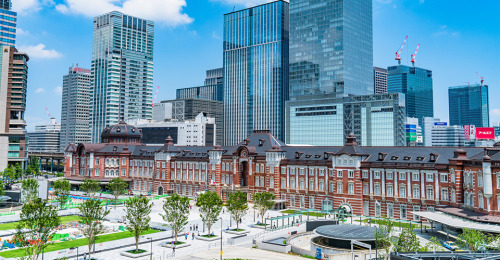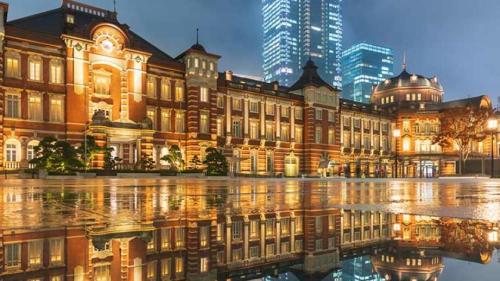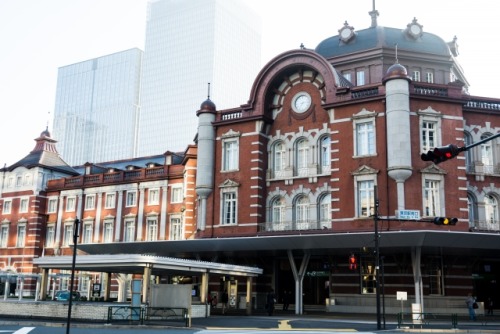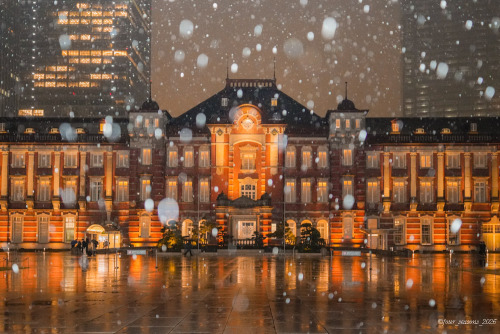
216 posts
Capitulo 1:/Goryokaku A Hallmark With European Airs.







Capitulo 1:ヨーロッパの雰囲気が漂う五稜郭/Goryokaku a hallmark with European airs.
-
Sean bienvenidos a una nueva entrega de cultura e historia japonesa, en este caso vamos a hablar sobre Goryokaku, localizado en Hakodate en la prefectura de Hokkaido al norte de la isla de Honshu.
-
Toponimia de Hokkaido en, el siglo XIX se llamaba Ezo, último reducto del shogunato contra el nuevo orden creando una república (1868-1869). Hay que destacar que Japón estubo cerrado al mundo durante 260 (1603-1868), este periodo se le conoce como periodo Edo, bajo el régimen militar Tokugawa.
-
En 1854 finalizaron los tratados de amistad con Estados Unidos, Gran Bretaña, Rusia. Hakodate se convirtió en una ciudad portuaria abierta al mundo exterior y en 1858, concluyendo el tratado comercial y al año siguiente se convirtió en puerto comercial. Hisaburo Takeda, estudio en Europa y se formó en fortalezas tipo estrelladas de traza italiana, en 1864 se completaron las contribuciones de la fortaleza.
-
Espero que os guste y nos vemos em próximas publicaciones.
-
Welcome to a new installment of Japanese culture and history, in this case we are going to talk about Goryokaku, located in Hakodate in the Hokkaido prefecture north of the island of Honshu.
-
Toponymy of Hokkaido in the 19th century was called Ezo, the last stronghold of the shogunate against the new order creating a republic (1868-1869). It should be noted that Japan was closed to the world for 260 years (1603-1868), this period is known as the Edo period, under the Tokugawa military regime.
-
In 1854 the friendship treaties with the United States, Great Britain, and Russia ended. Hakodate became a port city open to the outside world and in 1858, concluding the commercial treaty and the following year it became a commercial port. Hisaburo Takeda, studied in Europe and trained in Italian star-type fortresses, in 1864 the contributions of the fortress were completed.
-
日本の文化と歴史の新しい記事へようこそ。今回は、本州の北、北海道の函館にある五稜郭について話します。
-
19 世紀の北海道の地名は蝦夷と呼ばれ、共和制を樹立する新秩序(1868~1869 年)に対抗する幕府の最後の拠点でした。 日本は 260 年間 (1603 年から 1868 年まで) 鎖国していたことに注意してください。この期間は、徳川軍事政権下の江戸時代として知られています。
-
1854 年にアメリカ、イギリス、ロシアとの友好条約が終了しました。 函館は対外に開かれた港湾都市となり、1858年に通商条約を締結し、翌年には商業港となりました。 武田久三郎はヨーロッパに留学し、イタリアの星型要塞で訓練を受け、1864 年に要塞の建設を完了しました。
source/ソース:photos internet/写真インターネット
-
 iamgroot65 liked this · 9 months ago
iamgroot65 liked this · 9 months ago -
 noseysilverfox liked this · 9 months ago
noseysilverfox liked this · 9 months ago -
 gerda-p liked this · 9 months ago
gerda-p liked this · 9 months ago -
 bruno-cgn liked this · 9 months ago
bruno-cgn liked this · 9 months ago -
 nevzatboyraz44 liked this · 9 months ago
nevzatboyraz44 liked this · 9 months ago -
 mla-luna-inalcanzable-blog liked this · 9 months ago
mla-luna-inalcanzable-blog liked this · 9 months ago -
 danielrexi reblogged this · 9 months ago
danielrexi reblogged this · 9 months ago -
 j3337777 reblogged this · 9 months ago
j3337777 reblogged this · 9 months ago -
 j3337777 liked this · 9 months ago
j3337777 liked this · 9 months ago -
 gillesarts liked this · 9 months ago
gillesarts liked this · 9 months ago -
 namazu9p liked this · 9 months ago
namazu9p liked this · 9 months ago -
 asahi-yamane-art liked this · 9 months ago
asahi-yamane-art liked this · 9 months ago -
 13olgablogpost liked this · 9 months ago
13olgablogpost liked this · 9 months ago -
 junian5522 liked this · 9 months ago
junian5522 liked this · 9 months ago -
 mozart3 liked this · 9 months ago
mozart3 liked this · 9 months ago -
 gowitef liked this · 9 months ago
gowitef liked this · 9 months ago -
 stevetoppsculpture liked this · 9 months ago
stevetoppsculpture liked this · 9 months ago -
 01012180630 liked this · 9 months ago
01012180630 liked this · 9 months ago -
 linghsu01 liked this · 9 months ago
linghsu01 liked this · 9 months ago -
 greetingsfrommadrid liked this · 9 months ago
greetingsfrommadrid liked this · 9 months ago -
 meklarian liked this · 10 months ago
meklarian liked this · 10 months ago -
 scary-pelican liked this · 10 months ago
scary-pelican liked this · 10 months ago -
 no111bloom liked this · 10 months ago
no111bloom liked this · 10 months ago -
 northameicanblog liked this · 10 months ago
northameicanblog liked this · 10 months ago -
 musicandgallery liked this · 10 months ago
musicandgallery liked this · 10 months ago -
 calomitchell liked this · 10 months ago
calomitchell liked this · 10 months ago -
 instantkidfan liked this · 10 months ago
instantkidfan liked this · 10 months ago -
 dingobobi123 reblogged this · 10 months ago
dingobobi123 reblogged this · 10 months ago -
 dingobobi123 liked this · 10 months ago
dingobobi123 liked this · 10 months ago -
 myoacer reblogged this · 10 months ago
myoacer reblogged this · 10 months ago -
 myoacer liked this · 10 months ago
myoacer liked this · 10 months ago -
 nancypedreira liked this · 10 months ago
nancypedreira liked this · 10 months ago -
 secondmouse liked this · 10 months ago
secondmouse liked this · 10 months ago -
 lovecraft42 liked this · 10 months ago
lovecraft42 liked this · 10 months ago -
 makingofblog liked this · 10 months ago
makingofblog liked this · 10 months ago -
 drewnozerca liked this · 10 months ago
drewnozerca liked this · 10 months ago -
 enablesomething liked this · 10 months ago
enablesomething liked this · 10 months ago -
 staakenau liked this · 10 months ago
staakenau liked this · 10 months ago -
 catdoll007 liked this · 10 months ago
catdoll007 liked this · 10 months ago -
 falseandrealultravival liked this · 10 months ago
falseandrealultravival liked this · 10 months ago -
 hu-sir liked this · 10 months ago
hu-sir liked this · 10 months ago -
 monaliza08 liked this · 10 months ago
monaliza08 liked this · 10 months ago -
 thelcsdaily liked this · 10 months ago
thelcsdaily liked this · 10 months ago
More Posts from Noticiasarquelogicasjaponesas




Sean bienvenidos japonistasarqueológicos, a una nueva entrega en la cual hablaremos de la famosa estación de Tokyo, uno de los pocos edificios que ha sobrevivido al paso del tiempo, ya que tras la operación doolittle y el gran terremoto de Tokio de 1923, Tokio ha sido muy remodelada, dicho esto pónganse cómodos que empezamos. - En 1908, comenzó su construcción en lo que respecta a la estación central, en 1914 empezó a funcionar, en la era Taisho 1915 Se inauguró el hotel de la estación de Tokio. En el año 1923 tiene lugar el Gran Terremoto de Kanto y el edificio de la estación no está particularmente dañado, se pudo reparar, pero la ciudad de Tokyo fue remodelada por completo y en 2007 realizaron trabajos de restauración, terminado en 2012. Hay que recordar que ha sufrido muchas restauraciones, ya que la de 1945 fue la más letal de todas. - Espero que os haya gustado y nos vemos en próximas publicaciones ¿Conocían este edificio y su historia? Que pasen una buena semana. - 今回は、有名な東京駅についてお話します。ドゥーリトル作戦や1923年の東京大震災の後、東京は大きく改造されましたが、その中でも数少ない時代の流れに耐えた建物の一つです。 - 1908年、中央駅の建設が始まり、1914年に開業、大正時代の1915年には東京ステーションホテルがオープンしました。1923年に関東大震災が起こり、駅舎は特に被害はなく、修復されましたが、東京の街は完全に改造され、2007年に修復工事が行われ、2012年に完成しました。1945年の震災が最も致命的であったため、何度も修復が行われたことを忘れてはならない。 - この建物とその歴史を知っていましたか?それでは、今週もよろしくお願いします。 - Welcome to a new installment in which we will talk about the famous Tokyo Station, one of the few buildings that has survived the passage of time, since after operation doolittle and the great Tokyo earthquake of 1923, Tokyo has been greatly remodelled, that said, make yourselves comfortable and let's get started. - In 1908, construction began on the Central Station, which became operational in 1914, and in the Taisho era 1915, the Tokyo Station Hotel was opened. In 1923 the Great Kanto Earthquake took place and the station building was not particularly damaged, it was repaired, but the city of Tokyo was completely remodelled and in 2007 restoration work was carried out, completed in 2012. It should be remembered that it has undergone many restorations, as the one in 1945 was the most lethal of them all. - I hope you liked it and see you in future posts. Did you know this building and its history? Have a nice week.



Sean bienvenidos a un nueva entrega un tanto especial, ya que tengo el gusto de presentaros Ishibutai, localizado en la prefectura de Nara data del periodo Asuka(592-710). - En un principio se barajaron hipótesis de que podría haber sido utilizado para espectáculos, en la década de los 30, Ishibutai es un kofun y os estaréis preguntando ¿no se supone que tenían ojo de cerradura? - Los podian a ver de muchos tipos se empiezan a construir en el año 300 al 592 d.c pero eso será otro capítulo de la arqueología y prehistoria japonesa. La tumba pudo pertenecer a Soga no Umako un político y ocupa una extensión de 54 m es la mayor estructura megalítica conocida en Japón. - ¿Hasta cuando estuvo utilizada? la edad de uso os dejará helados se construyó en el siglo VI y estuvo hasta el siglo VII para ser más exactos en este segundo dato en el 626 d.c. - En 1957 fue nombrado patrimonio nacional por la Unesco, ¿Cuánto pesa esta mole? un total de 30 rocas que le suman un peso aproximadamente de 2300 toneladas y las piedras del techo suman una friolera de 77 toneladas aproximadamente. - Espero que os haya gustado y nos vemos en una nueva publicación de arqueología y prehistoria arqueología japonesa. - Welcome to a new, somewhat special installment, as I have the pleasure of introducing you to Ishibutai, located in the Nara prefecture, dating from the Asuka period (592-710). - At first, hypotheses were considered that it could have been used for shows, in the 1930s, Ishibutai is a kofun and you may be wondering, aren't they supposed to have a keyhole? - You could see them of many types, they began to be built in the year 300 to 592 AD but that will be another chapter of Japanese archeology and prehistory. The tomb could have belonged to Soga no Umako, a politician, and occupies an area of 54 m, it is the largest megalithic structure known in Japan. - Until when was it used? The age of use will leave you frozen. It was built in the 6th century and was there until the 7th century to be more exact in this second data in 626 AD. - In 1957 it was named a national heritage site by UNESCO. How much does this mass weigh? a total of 30 rocks that add up to a weight of approximately 2,300 tons and the stones of the roof add up to a whopping 77 tons approximately. - I hope you liked it and see you in a new publication of archeology and prehistory Japanese archaeology. - 新しい、ちょっと特別な回へようこそ。今回は、飛鳥時代 (592 ~ 710 年) に遡る、奈良県にある石舞台についてご紹介したいと思います。 - 当初は、1930 年代にショーに使用されたのではないかという仮説が考えられていました。 石舞台は古墳ですが、鍵穴があるはずではないかと疑問に思うかもしれません。 - さまざまなタイプのそれらを見ることができ、それらは西暦 300 年から 592 年に建てられ始めましたが、それは日本の考古学と先史学の別の章となるでしょう。 この墓は政治家蘇我馬子の墓と考えられ、面積は54メートルあり、知られている巨石建造物としては日本最大である。 - いつ頃まで使われていましたか? この 2 番目のデータは西暦 626 年で、6 世紀に建てられ、より正確には 7 世紀まで存在していました。 - 1957 年にユネスコによって国家遺産に指定されましたが、この塊の重さはどれくらいでしょうか? 30 個の石を合計すると約 2,300 トン、屋根の石を合計すると約 77 トンにもなります。 - 気に入っていただければ幸いです。考古学と先史時代の日本の考古学の新しい出版物でお会いしましょう。



Sean bienvenidos japonsistasarqueológicos, a una nueva publicación en esta ocasión nos trasladamos a prefectura de Akita una vez más para hablar de la tumba de Ono no Komachi una vez dicho esto comenzamos. - Fue famosa como poeta, si no también tenía una belleza incomparable: ¡Fui a cubrir la tumba de Ono no Komachi en la ciudad de Osaki! ! La ciudad de Osaki, fue donde se refugió tras, ser expulsada del mismo, tuvo que regresar a Akita su ciudad natal. Después de eso, realizó una visita de 100 días para orar por la recuperación de su enfermedad, pero falleció el día en que se cumplió su deseo. Se dice que cuando los aldeanos la vieron, se apiadaron de ella y erigieron una lápida por su triste muerte. - ¿Quién fue Ono no Komachi? Fue una poetisa del periodo Heian, se desconocen cuando nació y murió, pero se la conoce como "Rokukasen", se baraja la posibilidad de que viviera en Kioto, además de la prefectura de Akita, como la prefectura de Kioto y la prefectura de Kumamoto, sobre dónde se dice que nació. - Espero que os haya gustado y nos vemos en próximas publicaciones, ¿Conocían esta historia y a la poetisa?. 今回も秋田県に場所を移し、小野小町の墓についてお話しします。 - 歌人として有名な小野小町だが、その美しさは比類ない。大崎市にある小野小町の墓を取材した!!大崎市から追放された彼女が避難した大崎市は、故郷の秋田に帰ることになった。その後、病気の回復を祈願して百日詣りをしたが、その願いが叶った日に亡くなった。その姿を見た村人たちが憐れみ、悲しい死を悼んで墓石を建てたという。 - 小野小町とは?平安時代の歌人で、いつ生まれ、いつ亡くなったかは不明だが、「六歌仙」の名で知られ、京都のほか、秋田県、京都府、熊本県などに住んでいたと考えられている。 - この物語と歌人をご存知でしたか? Welcome to a new publication, this time we move to Akita prefecture once again to talk about the tomb of Ono no Komachi, so let's begin. - She was famous as a poet, but she also had an incomparable beauty: I went to cover the tomb of Ono no Komachi in the city of Osaki! ! Osaki City, where she took refuge after being expelled from Osaki, had to return to Akita, her hometown. After that, she made a 100-day visit to pray for recovery from her illness, but died on the day her wish came true. It is said that when the villagers saw her, they took pity on her and erected a tombstone for her sad death. - Who was Ono no Komachi? She was a poetess of the Heian period, it is unknown when she was born and when she died, but she is known as "Rokukasen", and it is thought that she lived in Kyoto, as well as Akita Prefecture, Kyoto Prefecture and Kumamoto Prefecture, where she is said to have been born. - I hope you liked it and see you in future posts. Did you know this story and the poetess?

Sean bienvenidos, japonistasarqueologos, a una nueva entrega en esta ocasión comentaremos de por qué en Japón se come poca carne, una vez dicho esto pónganse cómodos que empezamos. - Seguramente todos pensemos, que en Japón se come carne y no otro tipo de alimentos, ya que eso sería un estereotipo alimenticio. Para empezar el tema hay que entender que la geografía juega un papel muy importante en todo esto porque hay pocos focos donde los japoneses puedan tener el ganado, por el hecho de que su país es muy accidentado geográficamente hablando, el 90% de la carne es importada como otros muchos productos porque Japón escasean muchos de ellos. - En su territorio crían pollos y la Wagyu que es la más conocida y más cara del mundo, además, Japón es el segundo mayor importador de carne de cerdo del mundo, llegando a importar unas 923.835 toneladas de carne en 2020. Por eso comer carne en Japón es muy cara, hay platos con carne, pero no os creáis que hay muchos, al contrario de los que hay más son de: pescado, arroz, verduras, es decir los brotes de soja, el arroz les sale más barato por poner algunos ejemplos y los lácteos es otro de los productos que son muy caros. Su dieta es una de las más sanas del mundo y eso se ve en su población la más longeva del mundo, llegando a los 100 años, aparte de un gran equilibrio alimenticio, aplicado a una buena filosofía. - En esta publicación no he hablado de la influencia Yankee en Japón, pero qué país no tiene su influencia de su asquerosa comida chatarra, normal que sean el país con más problemas de obesidad del mundo. Espero que os haya gustado y nos vemos en próximas publicaciones que pasen una buena semana. - ジャポニスタ・サルケオロゴスの皆さん、ようこそ!今回は、なぜ日本では肉をあまり食べないのかについてコメントします。 - 日本では肉を食べ、他の種類の食べ物は食べない。というのも、日本の国土は地理的に非常に起伏に富んでいるため、日本人が家畜を飼うことができる場所はほとんどない。 - さらに、日本は世界第2位の豚肉輸入国であり、2020年には約92万3,835トンの肉を輸入する。そのため、日本で肉を食べるのは非常に高価である。肉を使った料理はあるが、その数はそれほど多くない。彼らの食生活は世界で最も健康的なもののひとつであり、そのことは、優れた哲学に基づいた栄養バランスの良さとは別に、世界で最も長寿で100歳に達する彼らの人口にも表れている。 - 本書では、日本におけるヤンキーの影響については触れなかったが、ジャンクフードの影響を受けていない国があるだろうか?それでは、また次の記事でお会いしましょう。 - Welcome, japonistasarqueologos, to a new installment in this occasion we will comment on why in Japan they eat little meat, having said that, make yourselves comfortable and let's get started. - Surely we all think that in Japan they eat meat and not other types of food, since that would be a food stereotype. To begin the subject we must understand that geography plays a very important role in all this because there are few places where the Japanese can keep livestock, due to the fact that their country is very rugged geographically speaking, 90% of the meat is imported like many other products because Japan has a shortage of many of them. - On its territory they raise chickens and Wagyu which is the best known and most expensive in the world, in addition, Japan is the second largest importer of pork in the world, importing some 923,835 tonnes of meat in 2020. That is why eating meat in Japan is very expensive, there are dishes with meat, but do not think that there are many, on the contrary there are more: fish, rice, vegetables, i.e. bean sprouts, rice is cheaper to give some examples and dairy products is another of the products that are very expensive. Their diet is one of the healthiest in the world and this can be seen in their population, the longest in the world, reaching 100 years of age, apart from a great nutritional balance, applied to a good philosophy. - In this publication I have not talked about the Yankee influence in Japan, but what country does not have its influence of its disgusting junk food, it is normal that they are the country with more obesity problems in the world. I hope you liked it and see you in the next posts have a nice week.




Sean bienvenidos, japonistasarqueologicos, al segundo capítulo del japón prehistórico y seguir recorriendo sus lugares mitológicos y mágicos una vez dicho esto póngase comandos que empezamos. - Para continuar nuestro viaje, más vale tarde que nunca pero despacio y con buena letra. Nos trasladamos a Kuromatayama una montaña con forma de pirámide, que se localiza en la meseta de Nakadori en el distrito Towada Oyu de la ciudad de Kazuno , prefectura de Akita. - En la década de 1992,se realizó una encuesta académica y como resultado, aunque esta montaña actualmente está cubierta de tierra, se descubrió que era una estructura artificial de unos 7 a 10 niveles que llegaban desde la base hasta la cima. Además, se halló una cavidad a 10 metros por debajo de la cumbre, y es muy probable que alguien esté enterrado allí. - Espero que os haya gustado y nos vemos en próximas publicaciones mis amantes del mundo japonés, que pasen una buena semana. - 考古学者の日本主義者の皆さん、先史時代の日本の第 2 章へようこそ。神話と魔法の場所を旅し続けてください。そう言われたら、コマンドを入力して始めましょう。 - 旅を続けるには、遅刻しないよりはマシですが、ゆっくりと良い字で書きましょう。 秋田県鹿角市十和田大湯地区の中通高原にあるピラミッド型の山「黒俣山」へ移動します。 - 1992年代に学術調査が行われた結果、この山は現在は土で覆われているものの、麓から頂上まで7~10層程度の人工構造物であることが判明した。 また、山頂から10メートルほど下には空洞が発見されており、人が埋葬されている可能性が高い。 - 日本の世界を愛する皆さん、良い一週間をお過ごしください。 - Welcome, archaeological Japanists, to the second chapter of prehistoric Japan and continue touring its mythological and magical places. Once that has been said, put in commands and let's begin. - To continue our journey, better late than never but slowly and with good handwriting. We move to Kuromatayama, a pyramid-shaped mountain, located on the Nakadori Plateau in the Towada Oyu district of the city of Kazuno, Akita Prefecture. - In the 1992s, an academic survey was conducted and as a result, although this mountain is currently covered with earth, it was found to be an artificial structure of about 7 to 10 levels reaching from the base to the top. Additionally, a cavity was found 10 meters below the summit, and it is very likely that someone is buried there. - I hope you liked it and see you in future posts my lovers of the Japanese world, have a good week.